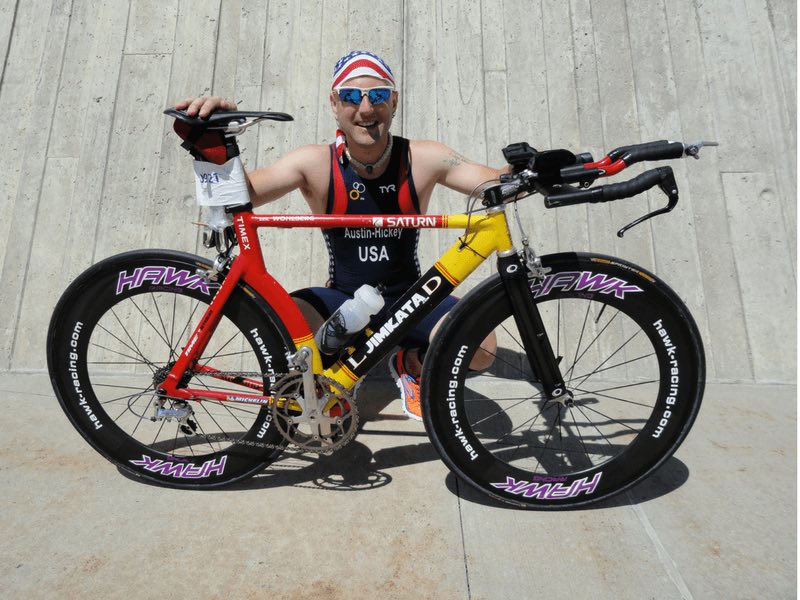One of the most frequent questions we get on PSE is:
How do I change PSE PRO programming to train for a long course/ultra-distance race?
The short answer is you don’t need to change much. We have found through our own experimentation and research that you do not have to train long to race long. It is our duty and pleasure to help educate athletes and coaches on why we have decided to go this route when there are so many other options for getting up the mountain. We have asked none other than our PSE Bike Coach and Physio Professor Doc Hickey to help explain the method behind the madness of the PSE PRO training philosophy. Doc has a great way of taking complex theories like energy system development and simplifying them so we mere mortals can understand and execute with more confidence. Without further adieu here is the good Doc:
At the most basic level, endurance training is about energy system development and strength. Energy system development is accomplished in the interval workouts, steady state efforts and conditioning pieces. The foundation of endurance is aerobic capacity. Aerobic capacity is best developed with high intensity work ranging from 4 to 20 minutes. Strength, ideal for improving movement economy, is built through resistance training.
Keeping the daily sessions short, yet intense keeps the hormone Cortisol in its hive. After 45 minutes of physical activity, Cortisol is released and begins to un-do many training gains. Let me repeat, you have 45min to get high quality work in and done, before some of it can be wasted. When shifting away from the traditional high volume, low intensity training philosophy to the low volume, high intensity PSE approach there are some considerations to bear in mind:
- When racing, trust the process and start slowly. PSE Sport coupled with PSE Fuel will turn your body into a fat burning machine, something that is essential for long distance success. By moderating your opening efforts your body will be burning fat as its primary fuel source. A blistering opening pace will send your body straight to the muscle & liver glycogen tanks which is not what you want to do. Save your glycogen stores for the last 45 minutes of the race. Use the nasal only breathing approach to help with this as well.
2. Strength work is endurance work in disguise. With increased strength, your movement will become more efficient. Also, conditioning sessions featuring multiple stations pre-fatigue muscles used in sport based movements. This stimulates the closing stages of an event.
For example, a 20 minute AMRAP of 25 kettlebell swings paired with a 200m run produces the same metabolic conditioning effect as a 20 minute tempo run with the added benefits of:
a. Strength from the kettlebell swings
b. Improved biomechanics from the hard 200m efforts
c. Psychological callusing from the cycling between high intensity resistance training and high intensity running
-
- 3. Try a dry run about 3 weeks out. On the stamina day (Saturday) 3 weeks before your event, increase your warm-up and cool down distance so that your TOTAL training time equals your projected finish time.
For example, someone doing a 50 mile bike race with an estimated finish time of 3:30, is not going to ride 50 miles this day or even 3:30 consecutively. They would ride for about 2 hours and use the other 1:30 hours working on skill in the warm up and cool down and also mobilizations. This session is an opportunity to practice fueling, hydration, positioning on the bike & mental rehearsal for the event. Take note, you will more than likely need more recovery as a result of this training day as well.
- 3. Try a dry run about 3 weeks out. On the stamina day (Saturday) 3 weeks before your event, increase your warm-up and cool down distance so that your TOTAL training time equals your projected finish time.
- 4. Not only do we write these workouts, we do them. I recently did a one day 140-mile bike ride to raise money for my high school. The event was in May. My longest ride was an 80-mile fact finding mission in March. I also did a 60-mile ride 10 days out to dial in bike position. My local bike shop sponsored the ride and donated a Specialized Venge so I had to be sure of the fit (one of the cardinal rules of endurance sports is nothing new on race day!). As for the rest of my training, the other days were straight out of the PSE playbook with no session taking more than 60 minutes. I completed the ride in less than 9 hours raising $10,000 for my school. As an epilogue, a little over two weeks after this ride I took 2nd in my division at the Philadelphia International Amateur Time Trial, an event lasting less than 20 minutes. You do not have to train long to race long (or even short!).
-Doc
This is a good time to repeat our motto- programs are a guide not a gospel. So use what you like, add what you feel you need and most of all have fun with the journey.


No Comments